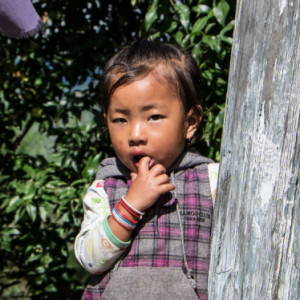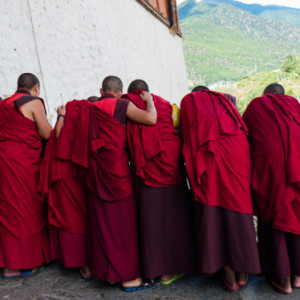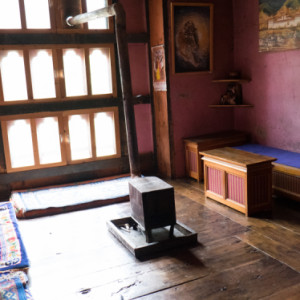Monks, museums, and farms
After seeing the group of trekkers off on their 8-day wilderness adventure, we set out to visit some local spots in Paro.
First stop, a new museum featuring a large collection of masks, clay sculptures, textiles, and an exhibit on the Bhutan's flora and fauna. No pix allowed, so instead in extras, a portrait of a kid that was just outside the museum. Cute, non?
Next, a dsong built in 1645, which serves both as an administrative center and a training center for monks: the students are clad in red robes; the masters sport a yellow top. The main blip was caught just after the monks power washed (yes, you read that correctly) a courtyard with the help of the local firemen's hose. The buildings in that dsong are just magnificent.I've added an extra of some students huddled together looking at something that caught their attention. I was surprised to see each of them sporting a cell phone, though they quickly hid it for pictures. Teens will be teens :)
After another stop at an ever older but much smaller dsong, we headed to a farmer's house some 300+ years old. The family offers some interesting services. One is a b&b version of housing (see the dining area in extra); pretty basic stuff in terms of accommodations but I loved the wooden floors everywhere, made smooth and shiny over time - beautiful. The other service is a hot stone bath. The stones are heated in a heap until they almost glow red, then dropped in wooden bathtubs filled with glacial water. It's a treat, I'm told, of which the family avails itself once or twice a year.
We're now in Thimphu, the capital of Bhutan and home to 100,000 people (12% of Bhutan's population). I've decided to pass on tomorrow's hike so I can get a handle on both a head cold and the more problematic "tourist's curse" that's been plaguing me for four days now... I'm taking more meds at the moment than I normally take in a year's time... Oh well, onwards and upwards :)




Comments
Sign in or get an account to comment.


